Home>Storage Ideas>Kitchen Storage>Vinyl Kitchen Flooring Ideas: 17 Practical But Luxury Floors
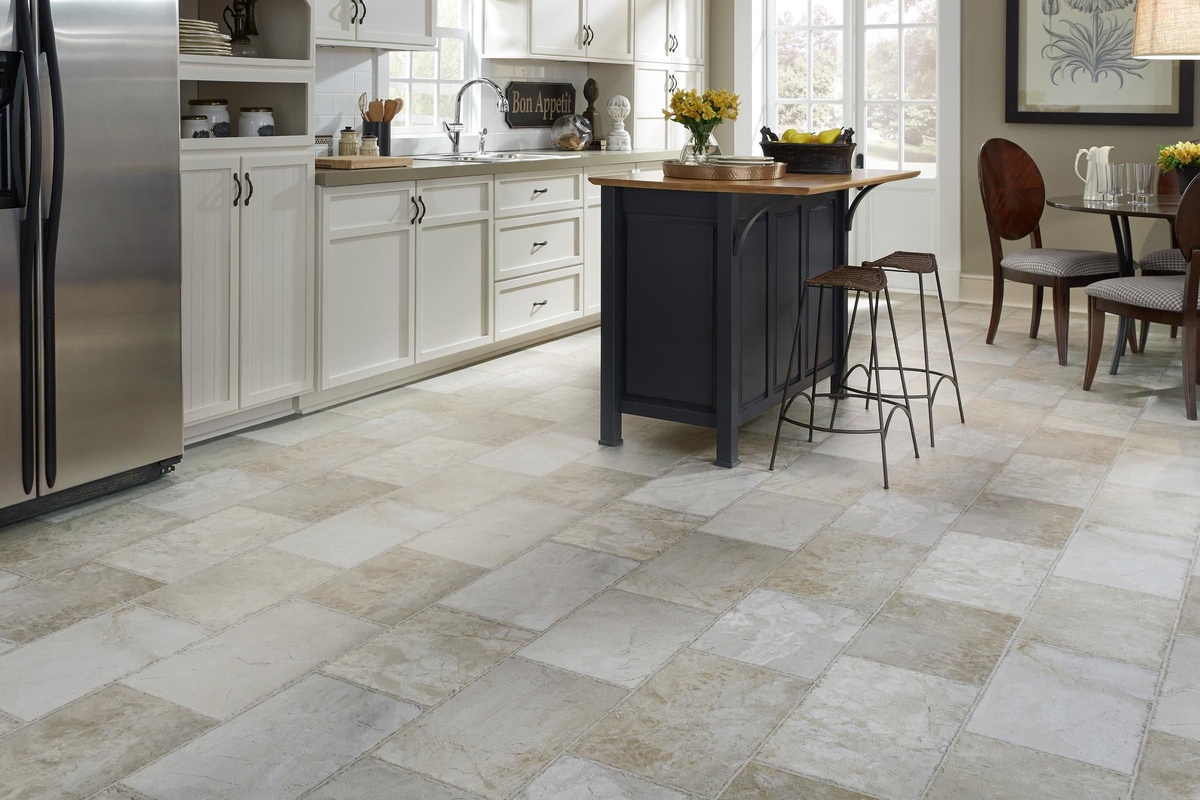

Kitchen Storage
Vinyl Kitchen Flooring Ideas: 17 Practical But Luxury Floors
Modified: October 20, 2024
Discover 17 practical and luxurious vinyl kitchen flooring ideas. Enhance your space with stylish floors that complement your kitchen storage ideas.
(Many of the links in this article redirect to a specific reviewed product. Your purchase of these products through affiliate links helps to generate commission for Storables.com, at no extra cost. Learn more)
Introduction
When it comes to kitchen flooring, there is a wide range of options to choose from. From ceramic tiles to hardwood floors, the choices are endless. However, one type of flooring that has gained popularity in recent years is vinyl flooring. Vinyl flooring offers a practical and affordable solution for kitchens, while also providing a touch of luxury and style.
In this article, we will explore 17 practical yet luxury vinyl kitchen flooring ideas that can transform your kitchen into a functional and aesthetically pleasing space. Whether you prefer the look of hardwood, stone, or patterned tiles, there is a vinyl flooring option to suit every style and budget.
Before diving into the various vinyl kitchen flooring ideas, it is important to understand the benefits and drawbacks of using vinyl in your kitchen. Vinyl flooring is known for its durability, easy maintenance, and water resistance, making it an ideal choice for an area prone to spills and high foot traffic. Additionally, vinyl flooring is available in an array of colors, patterns, and textures, allowing you to create a customized look for your kitchen.
One of the main advantages of vinyl flooring is its affordability compared to other flooring options like hardwood or stone. This makes it an excellent choice for homeowners on a budget who still want a high-quality and visually appealing flooring solution. Vinyl flooring is also relatively easy to install, especially if you opt for a click-and-lock or peel-and-stick installation method.
However, it is important to note that vinyl flooring may not have the same resale value as hardwood or stone floors. Additionally, while vinyl flooring is scratch and stain-resistant, it may not be as durable as hardwood or stone. With proper care and maintenance, vinyl flooring can last for many years, but it may show signs of wear and tear over time.
Now that we have an overview of the benefits and drawbacks of vinyl flooring, let’s explore 17 practical yet luxury vinyl kitchen flooring ideas that will elevate the look of your kitchen!
Key Takeaways:
- Vinyl flooring offers a wide range of practical and stylish options for kitchen spaces, from hardwood and stone effects to retro and metallic designs, providing homeowners with customizable and durable flooring solutions.
- Each type of vinyl flooring, from wood-look to black and white designs, presents unique benefits and considerations, allowing homeowners to select a flooring option that aligns with their budget, style, and maintenance preferences.
Hardwood Vinyl Tiles
Hardwood vinyl tiles combine the luxurious look of hardwood with the durability and affordability of vinyl. These tiles mimic the natural grain patterns and textures found in traditional hardwood floors, adding warmth and elegance to your kitchen. Here are some pros, cons, and installation tips for hardwood vinyl tiles.
Pros of Hardwood Vinyl Tiles
- Affordability: Hardwood vinyl tiles are a cost-effective alternative to hardwood floors, making them a budget-friendly option for homeowners.
- Durability: Vinyl flooring is known for its durability and resistance to scratches, dents, and stains. Hardwood vinyl tiles can withstand the daily wear and tear in a busy kitchen environment.
- Easy Maintenance: Vinyl flooring is easy to clean and maintain. Spills and stains can be quickly wiped away, and regular sweeping or vacuuming can keep the floor looking pristine.
- Water Resistance: Unlike traditional hardwood floors, hardwood vinyl tiles are water-resistant, making them suitable for kitchens where spills and moisture are common.
Cons of Hardwood Vinyl Tiles
- Resale Value: While hardwood vinyl tiles offer the look of hardwood, they may not have the same resale value as genuine hardwood floors. However, the cost savings and durability make them a more practical choice for many homeowners.
- Softer Surface: Compared to real hardwood, vinyl has a softer surface, which can make it susceptible to indentations from heavy furniture or appliances. Using furniture pads or coasters can help prevent damage.
Installation Tips for Hardwood Vinyl Tiles
Installing hardwood vinyl tiles is a relatively straightforward process. Here are some tips to ensure a successful installation:
- Prepare the Subfloor: Ensure that the subfloor is clean, dry, and level. Remove any existing flooring, and repair any imperfections or damage before installing the vinyl tiles.
- Acclimate the Tiles: Allow the vinyl tiles to acclimate to the room’s temperature and humidity for at least 24 hours before installation.
- Use the Right Tools: Use a utility knife, tape measure, and straight edge for accurate cutting and measuring of the tiles. A vinyl floor roller will help ensure proper adhesion.
- Follow Manufacturer’s Instructions: Always refer to the manufacturer’s installation instructions for specific guidance on adhesive application, seam sealing, and any additional steps.
- Consider Professional Installation: If you are unsure about your DIY skills or have a large or complex kitchen, it may be worth hiring a professional installer to ensure a seamless and professional-looking result.
By following these installation tips and considering the pros and cons, you can make an informed decision about using hardwood vinyl tiles for your kitchen flooring. With their realistic wood appearance, durability, and affordability, hardwood vinyl tiles are an excellent choice for homeowners seeking a luxurious and practical flooring option.
Stone Effect Vinyl Flooring
Stone effect vinyl flooring offers the timeless beauty of natural stone without the high cost and maintenance requirements. With its realistic texture and appearance, this type of vinyl flooring can add sophistication and charm to your kitchen. Let’s explore the advantages, disadvantages, and how to choose the right stone effect vinyl flooring.
Advantages of Stone Effect Vinyl Flooring
- Cost-effective: Stone effect vinyl flooring is a cost-effective alternative to real stone flooring. You can achieve the same elegant look without the hefty price tag.
- Low maintenance: Unlike natural stone flooring, which requires regular sealing and maintenance, stone effect vinyl flooring is easy to clean and maintain. It is resistant to stains, scratches, and moisture, making it ideal for kitchen use.
- Variety of styles and colors: Stone effect vinyl flooring comes in a wide range of styles, colors, and patterns, allowing you to find the perfect match for your kitchen’s aesthetic. Whether you prefer the look of marble, slate, or travertine, there is a stone effect vinyl flooring option to suit your taste.
- Comfort underfoot: Unlike real stone, vinyl flooring provides a slightly cushioned surface, offering more comfort underfoot, especially during prolonged standing or cooking sessions.
Disadvantages of Stone Effect Vinyl Flooring
- Not as durable as real stone: While stone effect vinyl flooring is durable and resistant to wear and tear, it is not as durable as real stone. Heavy impact or sharp objects may cause damage or dents on the surface.
- Temperature sensitivity: Vinyl flooring can be sensitive to temperature fluctuations, which may lead to expansion or contraction. It is important to follow the manufacturer’s guidelines for temperature and acclimation before installation.
How to Choose the Right Stone Effect Vinyl Flooring
When selecting stone effect vinyl flooring for your kitchen, consider the following factors:
- Style: Determine the type of stone look you want to achieve in your kitchen. Consider whether you prefer the elegance of marble, the ruggedness of slate, or the warmth of travertine.
- Color: Choose a color that complements your kitchen’s overall design scheme. Whether you prefer earthy tones or bold hues, there are stone effect vinyl flooring options available to suit every style.
- Texture: Look for vinyl flooring that replicates the texture and feel of real stone. Some options may have embossed patterns or textured surfaces to enhance the authenticity of the stone effect.
- Thickness and wear layer: Consider the thickness of the vinyl planks or tiles, as well as the wear layer thickness. Thicker vinyl and a more substantial wear layer will offer greater durability and longevity.
- Installation method: Choose between click-and-lock or glue-down installation methods, depending on your preference and the condition of your subfloor.
By considering these factors, you can choose the right stone effect vinyl flooring that best suits your kitchen’s style and needs. Whether you want to create a rustic farmhouse vibe or a modern, sleek look, stone effect vinyl flooring provides a practical and attractive solution for your kitchen flooring.
Patterned Vinyl Tiles
Patterned vinyl tiles offer a unique and visually striking flooring option for kitchens. With a wide range of patterns and designs available, you can add personality and character to your kitchen space. Let’s explore the benefits of patterned vinyl tiles, their drawbacks, and some tips for selecting and installing them in your kitchen.
Benefits of Patterned Vinyl Tiles
- Visual Impact: Patterned vinyl tiles can make a bold statement and serve as a focal point in your kitchen. Whether you choose intricate geometric patterns or vibrant floral designs, they can add a touch of visual interest and elevate the overall aesthetics of the space.
- Customization Options: With a wide range of patterns and designs available, patterned vinyl tiles offer endless possibilities for customization. You can mix and match patterns, create unique motifs, or even mimic the look of expensive tiles or carpets at a fraction of the cost.
- Easy Maintenance: Like other vinyl flooring options, patterned vinyl tiles are easy to clean and maintain. Regular sweeping and occasional mopping are usually sufficient to keep them looking fresh and vibrant.
- Durability: Vinyl tiles are known for their durability, and patterned vinyl tiles are no exception. They can withstand heavy foot traffic, resist scratches and stains, and maintain their vibrant colors and patterns over time.
Drawbacks of Patterned Vinyl Tiles
- Pattern Limitations: While patterned vinyl tiles offer great design possibilities, the range of available patterns may still be limited compared to other types of flooring. However, the variety of options on the market is continually expanding, providing more choices for homeowners.
- Overwhelming Design: It’s important to carefully consider the scale and intensity of the pattern you choose. Some patterns may be too busy or overwhelming in a small kitchen space, making it feel cluttered. Ensuring the pattern complements the overall design scheme is essential for creating a cohesive look.
Tips for Selecting and Installing Patterned Vinyl Tiles
When choosing and installing patterned vinyl tiles in your kitchen, consider the following tips:
- Consider the Size of the Space: In a small kitchen, opt for smaller-scale patterns to avoid overwhelming the area. In larger kitchens, bolder and more detailed patterns can create a dramatic impact.
- Coordinate with the Design Scheme: Choose a pattern that complements the colors and style of your kitchen. Consider the overall design scheme and whether you want the patterned vinyl tiles to be the focal point or blend in harmoniously with other elements.
- Installation Techniques: Make sure to follow the manufacturer’s recommendations for installation, such as using the correct adhesive, preparing the subfloor, and carefully aligning the tiles for a seamless look. It may be worth seeking professional installation for complex patterns or large areas.
- Maintenance and Care: Regularly clean and maintain your patterned vinyl tiles to keep them looking their best. Use a gentle cleanser suitable for vinyl flooring and avoid abrasive cleaning tools.
Patterned vinyl tiles offer a versatile and visually appealing option for kitchen flooring. By considering the benefits, drawbacks, and installation tips, you can select and install patterned vinyl tiles that transform your kitchen into a unique and stylish space.
Read more: How To Polish Vinyl Floor
Luxury Vinyl Planks
Luxury vinyl planks (LVP) are a popular choice for kitchen flooring due to their durability, versatility, and realistic look. Designed to mimic the appearance of hardwood, luxury vinyl planks offer a high-end aesthetic without the high price tag. Below, we’ll explore the advantages and disadvantages of luxury vinyl planks and provide a step-by-step guide on how to install them in your kitchen.
Advantages of Luxury Vinyl Planks
- Realistic Appearance: Luxury vinyl planks closely resemble the look and texture of hardwood floors. They come in a variety of styles, finishes, and colors, allowing you to achieve the desired aesthetic for your kitchen.
- Durability: Luxury vinyl planks are highly durable and can withstand heavy foot traffic, stains, scratches, and moisture. They are particularly suitable for kitchens where spills and messes are common.
- Easy Maintenance: Cleaning luxury vinyl planks is a breeze. Simply sweep or vacuum regularly to remove dirt and debris, and use a damp mop or recommended cleaner for deeper cleaning.
- Comfort Underfoot: Luxury vinyl planks offer a cushioned surface that is softer underfoot compared to hardwood floors, making them more comfortable to stand on for prolonged periods while cooking or cleaning.
- Affordability: Luxury vinyl planks are generally more affordable than hardwood flooring, yet they provide a similar look and feel. This makes them an attractive option for homeowners on a budget.
Disadvantages of Luxury Vinyl Planks
- Resale Value: While luxury vinyl planks offer many benefits, they may not have the same resale value as authentic hardwood floors. However, their affordability and durability often outweigh this drawback.
- Less Natural Feel: While luxury vinyl planks look remarkably similar to hardwood, they lack the natural variation and feel of real wood. Some homeowners prefer the authenticity and uniqueness of natural materials.
- Not Completely Scratch-Resistant: While luxury vinyl planks are more resistant to scratches than hardwood, they are not entirely scratch-proof. It’s essential to use furniture pads and take precautions to prevent dragging heavy objects across the floor.
Installing Luxury Vinyl Planks: A Step-by-Step Guide
Installing luxury vinyl planks can be a DIY-friendly project. Follow these steps to ensure a successful installation:
- Prepare the Subfloor: Ensure the subfloor is clean, dry, and level. Remove any existing flooring, fix any imperfections, and ensure the surface is smooth.
- Acclimate the Planks: Leave the luxury vinyl planks in the room for 48 hours to acclimate to the temperature and humidity of the space.
- Plan the Layout: Plan the layout of the planks, considering the best starting point and direction for the installation. Remember to consider expansion gaps around the edges.
- Install the Underlayment: If your manufacturer recommends it, install an underlayment for added cushioning, noise reduction, and moisture protection.
- Begin Installation: Start in the corner of the room and lay the first row of planks, using spacers to maintain the proper expansion gap. Install subsequent rows, locking the planks together using the manufacturer’s recommended method.
- Cut and Trim: Use a utility knife or a jigsaw to cut planks to fit around corners, doorways, or other obstacles. Take accurate measurements and use a square to ensure precise cuts.
- Apply Finishing Touches: Install baseboards or trim to cover the expansion gaps and give the flooring a polished look.
- Clean and Enjoy: Once the installation is complete, remove any debris and clean the luxury vinyl planks according to the manufacturer’s guidelines. Then, sit back and enjoy your beautiful new kitchen floor.
By following this step-by-step guide and considering the advantages and disadvantages, you can confidently install luxury vinyl planks in your kitchen, transforming it into a stylish, durable, and low-maintenance space.
Marble Vinyl Flooring
Marble is synonymous with elegance and luxury, but its natural counterpart can be expensive and high-maintenance. This is where marble vinyl flooring comes in. With its realistic appearance and affordability, marble vinyl flooring offers a practical and stylish option for your kitchen. Let’s explore the pros and cons of marble vinyl flooring and discuss how to choose the perfect one for your kitchen.
Pros of Marble Vinyl Flooring
- Affordability: Marble vinyl flooring provides the luxurious look of marble without the hefty price tag. It is a cost-effective alternative that allows you to enjoy the elegance of marble within your budget.
- Realistic Appearance: Marble vinyl flooring mimics the natural veining, color variations, and texture of real marble. The high-resolution printing technology used in its production creates a remarkably realistic and visually stunning result.
- Durability: Vinyl flooring is known for its durability, and marble vinyl flooring is no exception. It is resistant to scratches, stains, and water damage. With proper care, it can maintain its beauty for years.
- Low Maintenance: Marble vinyl flooring is easy to clean and requires minimal maintenance. Regular sweeping and occasional mopping with a vinyl floor cleaner are typically all that is needed to keep it looking pristine.
- Comfort: Vinyl flooring provides a softer and more comfortable surface compared to natural stone. It has some degree of resilience, making it more forgiving on your feet and joints while standing in the kitchen for long periods.
Cons of Marble Vinyl Flooring
- Resale Value: While marble vinyl flooring offers the look of real marble, it may not have the same resale value as authentic marble flooring. However, its affordability and durability can offset this drawback for many homeowners.
- Not Heat Resistant: Vinyl flooring, including marble vinyl flooring, can be susceptible to damage from high heat. It is essential to use protective mats or trivets under hot pans or appliances to prevent burns or discolouration.
- Subfloor Preparation: To achieve satisfactory results, the subfloor should be clean, level, and free of imperfections. Any irregularities or moisture issues should be addressed before installation.
Choosing the Perfect Marble Vinyl Flooring
When selecting marble vinyl flooring for your kitchen, consider the following factors:
- Color and Pattern: Marble vinyl flooring comes in a variety of colors and patterns, so choose one that complements your kitchen’s design and aesthetic. Consider the overall color scheme and whether you prefer a subtle or bold look.
- Size and Shape: Marble vinyl tiles are available in different sizes and shapes. Consider the dimensions of your kitchen and the effect you want to achieve. Larger tiles can create a more seamless and open look, while smaller tiles may offer more design possibilities.
- Thickness and Wear Layer: Consider the thickness of the vinyl tiles and the wear layer, which affects durability. Thicker tiles and a thicker wear layer provide enhanced protection against wear and tear.
- Texture: Some marble vinyl flooring options have textured surfaces to mimic the feel of natural marble. Consider whether you prefer a smoother or more textured finish.
- Budget: Set a budget and look for marble vinyl flooring within your price range. Balancing cost with quality and desired features will help you find the perfect flooring for your kitchen.
With these factors in mind, you can choose the perfect marble vinyl flooring that suits your style, budget, and practical needs. Whether you desire a timeless Carrara marble look or something more unique and modern, marble vinyl flooring offers a stunning and durable solution for your kitchen.
Read more: How To Install Vinyl Floor
Retro Vinyl Sheet Flooring
Retro vinyl sheet flooring is a popular choice for homeowners looking to create a vintage-inspired look in their kitchen. With its bold patterns and vibrant colors, retro vinyl sheet flooring can instantly transform a space into a nostalgic haven. Let’s explore the benefits of retro vinyl sheet flooring, its drawbacks, and how to incorporate it into your kitchen.
Benefits of Retro Vinyl Sheet Flooring
- Nostalgic Charm: Retro vinyl sheet flooring can bring a sense of nostalgia and charm to your kitchen. Its vintage-inspired designs pay homage to the past and can create a unique and inviting atmosphere.
- Endless Design Options: Retro vinyl sheet flooring comes in a wide range of patterns and colors, from bold geometric shapes to floral motifs. This versatility allows you to find the perfect design that complements your kitchen’s style and personality.
- Durability and Easy Maintenance: Vinyl sheet flooring is known for its durability and ease of maintenance. It resists stains, scratches, and fading, making it a practical choice for a busy kitchen. Regular sweeping and mopping will keep it looking vibrant and fresh.
- Cost-Effective: Retro vinyl sheet flooring offers an affordable alternative to materials like tile or hardwood. It provides the visual impact of more expensive flooring options without breaking the bank.
- Comfort Underfoot: Vinyl sheet flooring has a bit of cushioning, making it more comfortable to stand on for long periods. This can be particularly beneficial in a kitchen where you may spend extended periods while cooking or socializing.
Drawbacks of Retro Vinyl Sheet Flooring
- Subfloor Preparation: Installing vinyl sheet flooring requires a smooth and properly prepared subfloor. Any imperfections or unevenness can show through the sheet and affect the overall appearance.
- Less Authentic: While retro vinyl sheet flooring can evoke a vintage feel, it may not have the same authenticity and character as original retro flooring materials. However, the convenience, durability, and affordability of vinyl sheet flooring often compensate for this drawback.
How to Incorporate Retro Vinyl Sheet Flooring in Your Kitchen
Here are a few tips to help you incorporate retro vinyl sheet flooring into your kitchen:
- Select the Right Design: Choose a retro pattern and color that suits your kitchen’s overall style and desired aesthetic. Consider complementary colors and whether you want a bold statement or a more subtle retro touch.
- Keep Other Elements Neutral: Let the retro vinyl sheet flooring be the star of the show by keeping the rest of your kitchen design relatively neutral. This will allow the flooring to take center stage and create a visually balanced space.
- Accent with Retro Accessories: Enhance the retro vibe by incorporating vintage-inspired accessories, such as colorful appliances, retro-themed artwork, or antique kitchenware. These elements will work harmoniously with the retro vinyl sheet flooring, completing the nostalgic look.
- Balance Retro with Modern: Create a modern twist by combining retro vinyl sheet flooring with contemporary kitchen features. This blend of old and new will add an element of uniqueness and freshness to your kitchen.
By considering the benefits, drawbacks, and design tips mentioned above, you can successfully incorporate retro vinyl sheet flooring into your kitchen to achieve a charming and nostalgic ambiance. Whether you opt for a bold statement or a subtle retro touch, this flooring choice is sure to make a lasting impression.
Black and White Vinyl Flooring
Black and white vinyl flooring offers a timeless and classic look for kitchens. This iconic color combination can add sophistication, contrast, and visual interest to any space. Let’s explore the advantages of black and white vinyl flooring, its disadvantages, and some tips for achieving a classic look in your kitchen.
Advantages of Black and White Vinyl Flooring
- Elegant and Versatile: Black and white is a classic color combination that never goes out of style. It adds a touch of elegance and sophistication to your kitchen, and it complements a variety of design styles, from traditional to modern.
- Contrast and Visual Impact: The stark contrast between black and white creates a dramatic visual impact in any space. It can make a small kitchen look larger or add character and depth to a larger kitchen.
- Timeless Appeal: Black and white effortlessly stands the test of time. It is a design choice that has been used for decades and continues to be a popular option for those seeking a classic yet distinctive look.
- Easy to Coordinate: Black and white flooring can be paired with a wide variety of colors, allowing you to easily coordinate your kitchen decor and accessories. It serves as an excellent backdrop for pops of color or subtle accent pieces.
- Ease of Maintenance: Vinyl flooring is known for its durability and easy maintenance, and black and white vinyl flooring is no exception. Regular sweeping and occasional mopping with a mild cleaner keep it looking clean and fresh.
Disadvantages of Black and White Vinyl Flooring
- Visible Dirt and Stains: While black and white flooring can be visually striking, it can also show dirt, dust, and stains more readily than other flooring options. Regular cleaning is essential to maintain its crisp and polished appearance.
- Scratches and Wear: Like any vinyl flooring, black and white vinyl flooring is susceptible to scratches and signs of wear over time. Be mindful of using furniture pads and avoiding dragging heavy objects across the surface.
- It May Not Suit Every Design Style: While black and white flooring can work well in many design styles, it may not be the best fit for every kitchen aesthetic. Consider the overall look and feel you want to achieve to determine if black and white is the right choice for your space.
Tips for Achieving a Classic Look with Black and White Vinyl Flooring
To create a classic and timeless look with black and white vinyl flooring, consider the following tips:
- Choose the Right Pattern: Black and white vinyl flooring comes in various patterns, such as checkerboard, diagonal stripes, or geometric shapes. Select a pattern that best suits the size and shape of your kitchen, as well as the overall design theme.
- Balance the Colors: Achieve a harmonious balance between black and white by ensuring neither color dominates the space. This will maintain the visual impact while creating a cohesive and inviting environment.
- Pair with Neutral Cabinetry: To enhance the classic appeal, opt for neutral or white kitchen cabinetry. This allows the black and white flooring to take center stage and creates a clean and elegant aesthetic.
- Add Accents of Color: Introduce pops of color through accessories, such as vibrant kitchen utensils, colorful dishware, or fresh flowers. These accents will stand out against the black and white backdrop, adding interest and personality to the space.
- Lighting Matters: Proper lighting can greatly enhance the visual impact of black and white flooring. Consider incorporating natural light through windows, and add strategic lighting fixtures to highlight the flooring and create a warm and inviting atmosphere.
By considering the advantages, disadvantages, and design tips mentioned above, you can achieve a classic and timeless look in your kitchen with black and white vinyl flooring. This flooring choice will serve as a beautiful and enduring backdrop for your culinary endeavors and gatherings.
Read more: How To Fix Scratched Vinyl Floor
Metallic Vinyl Tiles
Metallic vinyl tiles offer a modern and eye-catching flooring option for kitchens. With their shimmering and reflective surface, they can add a touch of glamour and sophistication to your space. Let’s explore the pros and cons of metallic vinyl tiles and discuss some ideas for incorporating them into your kitchen design.
Pros of Metallic Vinyl Tiles
- Visual Impact: Metallic vinyl tiles create a stunning visual impact with their shiny and reflective surface. They can instantly elevate the overall look of your kitchen and make it feel more luxurious and contemporary.
- Versatility: Metallic vinyl tiles come in a variety of colors, shades, and patterns, allowing you to achieve the desired aesthetic for your kitchen. Whether you prefer silver, gold, or copper metallic tones, there is an option that will suit your style.
- Durability: Vinyl flooring is known for its durability, and metallic vinyl tiles are no exception. They are resistant to scratches, stains, and water damage, making them a practical choice for kitchen flooring.
- Easy Maintenance: Metallic vinyl tiles are easy to clean and maintain. Regular sweeping or vacuuming, along with occasional mopping using a mild cleaner, will keep them looking glossy and fresh.
- Wide Range of Applications: Metallic vinyl tiles are not limited to kitchen floors alone. You can also use them as a backsplash or as an accent wall to create a cohesive and contemporary look in your kitchen.
Cons of Metallic Vinyl Tiles
- Visible Scratches: While metallic vinyl tiles are durable, they can still become scratched over time, especially in high-traffic areas. It’s essential to take precautions by using furniture pads and avoiding dragging heavy objects across the floor.
- Temperature Sensitivity: Vinyl flooring, including metallic vinyl tiles, can be sensitive to temperature fluctuations. Extreme heat or cold can cause the tiles to expand or contract, potentially leading to buckling or warping.
- Not Suitable for Every Design Style: Metallic vinyl tiles have a modern and sleek appearance, which may not suit every kitchen design style. Consider the overall aesthetic of your kitchen to determine if metallic tiles will complement or clash with the existing elements.
Ideas for Incorporating Metallic Vinyl Tiles in Your Kitchen Design
Here are some ideas to help you incorporate metallic vinyl tiles into your kitchen design:
- Create a Statement Floor: Use metallic vinyl tiles as the focal point of your kitchen by covering the entire floor. This bold design choice will instantly transform the space and create a contemporary look.
- Add Metallic Accents: If covering the entire floor is too much for your taste, consider using metallic vinyl tiles as an accent. Create a border or patterned area within a larger neutral flooring to add a touch of shine and visual interest.
- Combine with Neutral Colors: To make the metallic tiles stand out, pair them with neutral-colored cabinets and countertops. This will create a sleek and balanced look, allowing the metallic tiles to be the star of the show.
- Use as a Backsplash: Create a cohesive and glamorous look by extending the metallic vinyl tiles from the floor to the backsplash. This will create a seamless and modern aesthetic, tying the entire kitchen design together.
- Pair with Modern Fixtures: Choose sleek and contemporary fixtures, like stainless steel appliances or brushed nickel hardware, to complement the metallic tiles. This will enhance the overall modern look and feel of your kitchen.
By considering the pros and cons and exploring these design ideas, you can incorporate metallic vinyl tiles into your kitchen to create a stunning and contemporary space. Whether you choose to go all out with a statement floor or add subtle metallic accents, these tiles will bring a touch of elegance and shine to your kitchen design.
Read more: How To Do Vinyl Flooring On Stairs
Wood-Look Vinyl Flooring
Wood-look vinyl flooring offers the warmth and beauty of hardwood floors with the added durability and affordability of vinyl. It is a popular choice for kitchens due to its versatility and low maintenance requirements. Let’s explore the benefits of wood-look vinyl flooring, its drawbacks, and some tips for selecting and maintaining it in your kitchen.
Benefits of Wood-Look Vinyl Flooring
- Natural Aesthetic: Wood-look vinyl flooring closely mimics the appearance of real hardwood, capturing the natural grain patterns and textures. It provides an authentic and warm look to your kitchen.
- Durability: Vinyl flooring is known for its durability, and wood-look vinyl flooring is no exception. It is resistant to scratches, stains, and impact, making it suitable for high-traffic areas like the kitchen.
- Moisture Resistance: Unlike hardwood floors, wood-look vinyl flooring is resistant to moisture damage. It can withstand spills and humidity, making it a practical choice for kitchens where water exposure is common.
- Cost-Effective: Wood-look vinyl flooring is typically more affordable than real hardwood floors. It offers the same aesthetic appeal at a fraction of the cost, making it a budget-friendly option.
- Easy Maintenance: Vinyl flooring is easy to clean and maintain. Regular sweeping or vacuuming and occasional mopping with a mild cleaner are sufficient to keep the floor looking beautiful. It also does not require refinishing or sealing like hardwood.
Drawbacks of Wood-Look Vinyl Flooring
- Resale Value: While wood-look vinyl flooring provides the appearance of hardwood, it may not have the same resale value. Authentic hardwood floors are often viewed as a premium feature in real estate.
- Less Authentic Feel: While wood-look vinyl flooring offers a realistic appearance, it lacks the texture and feel of real wood. Some homeowners may prefer the authenticity and natural variation of hardwood.
- Cannot be Refinished: Unlike hardwood floors that can be sanded and refinished, wood-look vinyl flooring cannot be refinished. Therefore, it may need to be replaced entirely if it becomes damaged or worn over time.
Tips for Selecting and Maintaining Wood-Look Vinyl Flooring
Consider the following tips when selecting and maintaining wood-look vinyl flooring in your kitchen:
- Choose Quality Products: Select high-quality wood-look vinyl flooring from reputable manufacturers. Look for products with realistic wood patterns, durable wear layers, and warranties to ensure longevity and performance.
- Consider the Thickness and Wear Layer: Thicker vinyl planks or tiles with a substantial wear layer offer increased durability and resistance to wear and tear.
- Installation: Follow the manufacturer’s instructions for proper installation, or consider hiring a professional installer for a seamless and long-lasting result.
- Protect Against Scratches: While wood-look vinyl flooring is durable, it is not completely scratch-resistant. Use furniture pads under heavy objects and avoid dragging sharp or heavy items across the floor.
- Regular Cleaning: Sweep or vacuum the floor regularly to remove dirt and debris. Use a damp mop with a vinyl floor cleaner to keep it clean and free from stains. Avoid excessive water, as it can seep into the seams and cause damage.
- Preventive Measures: Place doormats at entrances to minimize dirt and moisture tracking onto the floor. Use area rugs or protective mats in high-traffic areas or under kitchen appliances to prevent wear and tear.
By considering the benefits, drawbacks, and tips mentioned above, you can select and maintain wood-look vinyl flooring in your kitchen. This flooring option provides the beauty of hardwood floors without the high cost and maintenance, ensuring a stylish and practical choice for your kitchen.
Conclusion
In conclusion, vinyl flooring offers a practical and stylish solution for kitchen spaces, and the various options available allow homeowners to customize their kitchens to suit their unique tastes. From hardwood vinyl tiles to stone effect vinyl flooring, patterned vinyl tiles to luxury vinyl planks, marble vinyl flooring to retro vinyl sheet flooring, black and white vinyl flooring to metallic vinyl tiles, and wood-look vinyl flooring, there is a vinyl option to fit any design preference and budget.
Each type of vinyl flooring has its own set of advantages and disadvantages. Hardwood vinyl tiles offer the elegance of hardwood with the durability of vinyl. Stone effect vinyl flooring provides the beauty of natural stone without the price tag. Patterned vinyl tiles offer a unique and visually striking design element. Luxury vinyl planks mimic the appearance of hardwood with added durability. Marble vinyl flooring adds a touch of luxury to the kitchen. Retro vinyl sheet flooring brings a nostalgic charm to the space. Black and white vinyl flooring creates a timeless and classic look. Metallic vinyl tiles offer a modern and glamorous touch. Wood-look vinyl flooring gives the warmth and beauty of hardwood with easy maintenance.
When selecting vinyl flooring for your kitchen, consider factors such as cost, durability, ease of maintenance, and compatibility with your kitchen’s design style. Take into account the benefits and drawbacks of each option to make an informed decision. Also, proper installation and maintenance are important to ensure the longevity and beauty of your vinyl flooring.
Whether your kitchen design calls for a sleek and modern aesthetic, a retro-inspired atmosphere, or a timeless and elegant look, vinyl flooring can help you achieve your vision. With its affordability, durability, and wide range of design options, vinyl flooring is a versatile and practical choice for any kitchen.
Incorporate your personal style and creativity when selecting and using vinyl flooring in your kitchen, and you’ll be able to create a space that is not only functional but also visually stunning.
Remember to weigh the benefits and disadvantages of each type of vinyl flooring, consider your budget, and prioritize quality installation and maintenance. Let your kitchen reflect your personality and showcase your unique style with vinyl flooring that enhances the overall aesthetics of your space.
Embrace the versatility and beauty of vinyl flooring and transform your kitchen into a welcoming and functional area that you’ll love for years to come.
Curious about other flooring options? Wondering how vinyl stacks up against linoleum? Dive into our detailed comparison to make an informed choice for your home. Meanwhile, if you're considering a makeover, don't miss our inspiring story on how a bright kitchen remodel breathed new life into original features. Both articles offer valuable insights and creative ideas that could be perfect for your next project!
Frequently Asked Questions about Vinyl Kitchen Flooring Ideas: 17 Practical But Luxury Floors
Was this page helpful?
At Storables.com, we guarantee accurate and reliable information. Our content, validated by Expert Board Contributors, is crafted following stringent Editorial Policies. We're committed to providing you with well-researched, expert-backed insights for all your informational needs.
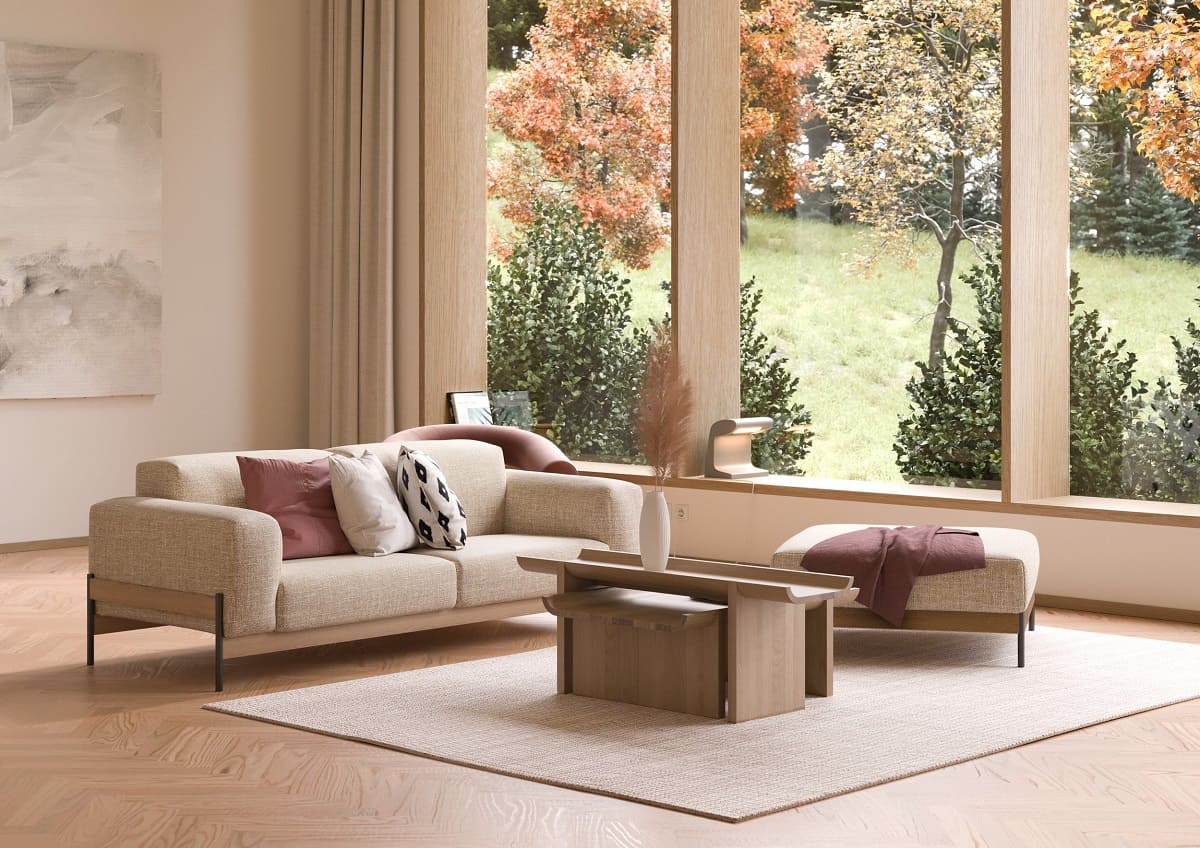
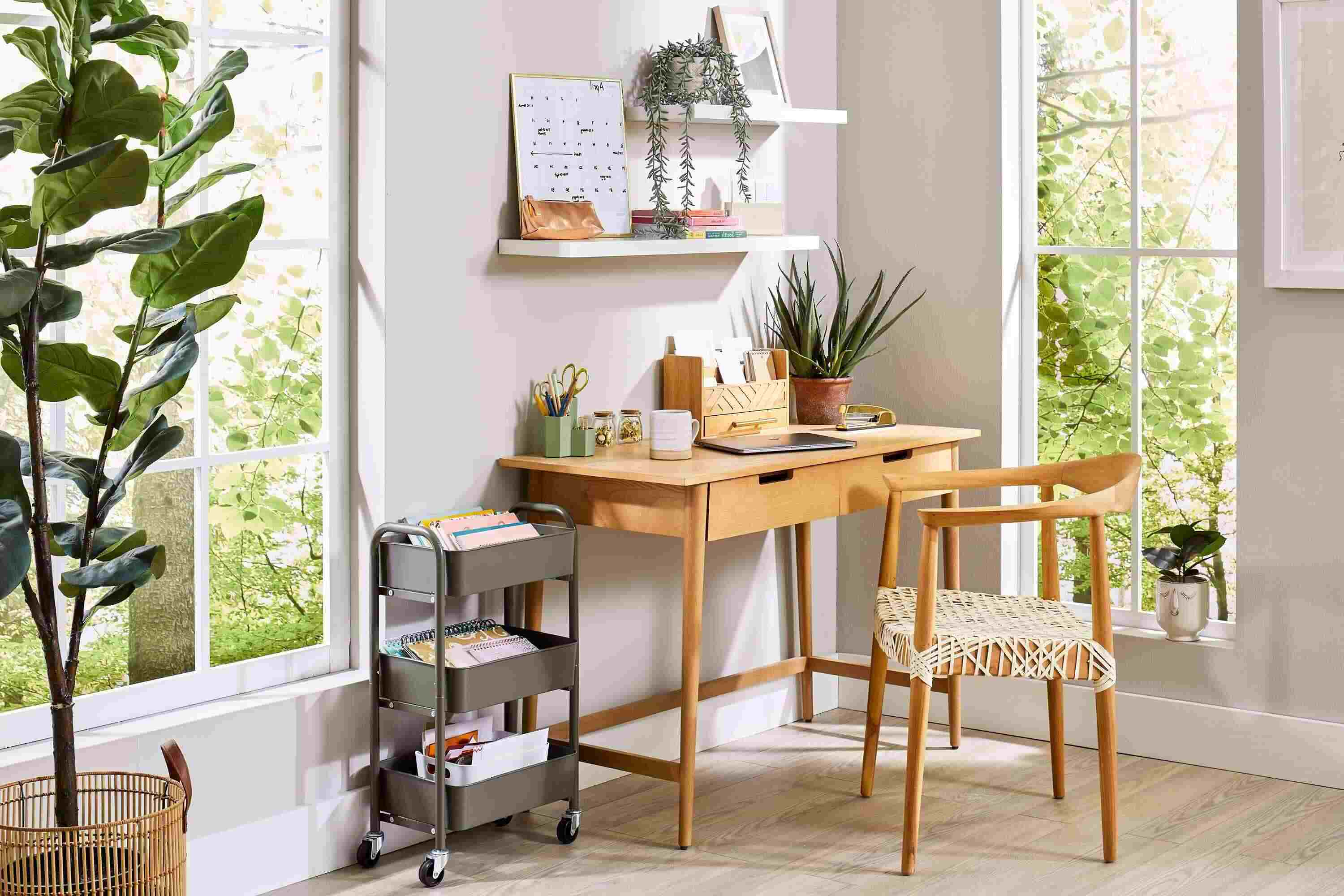

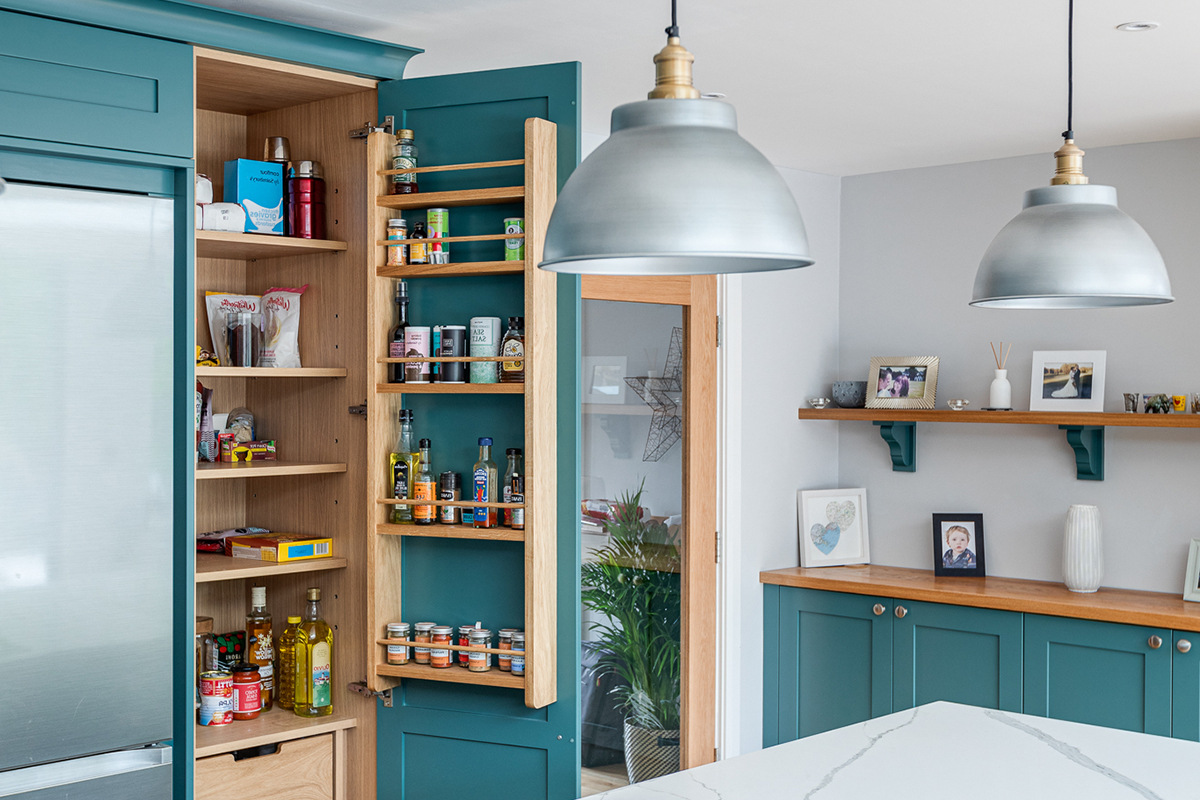
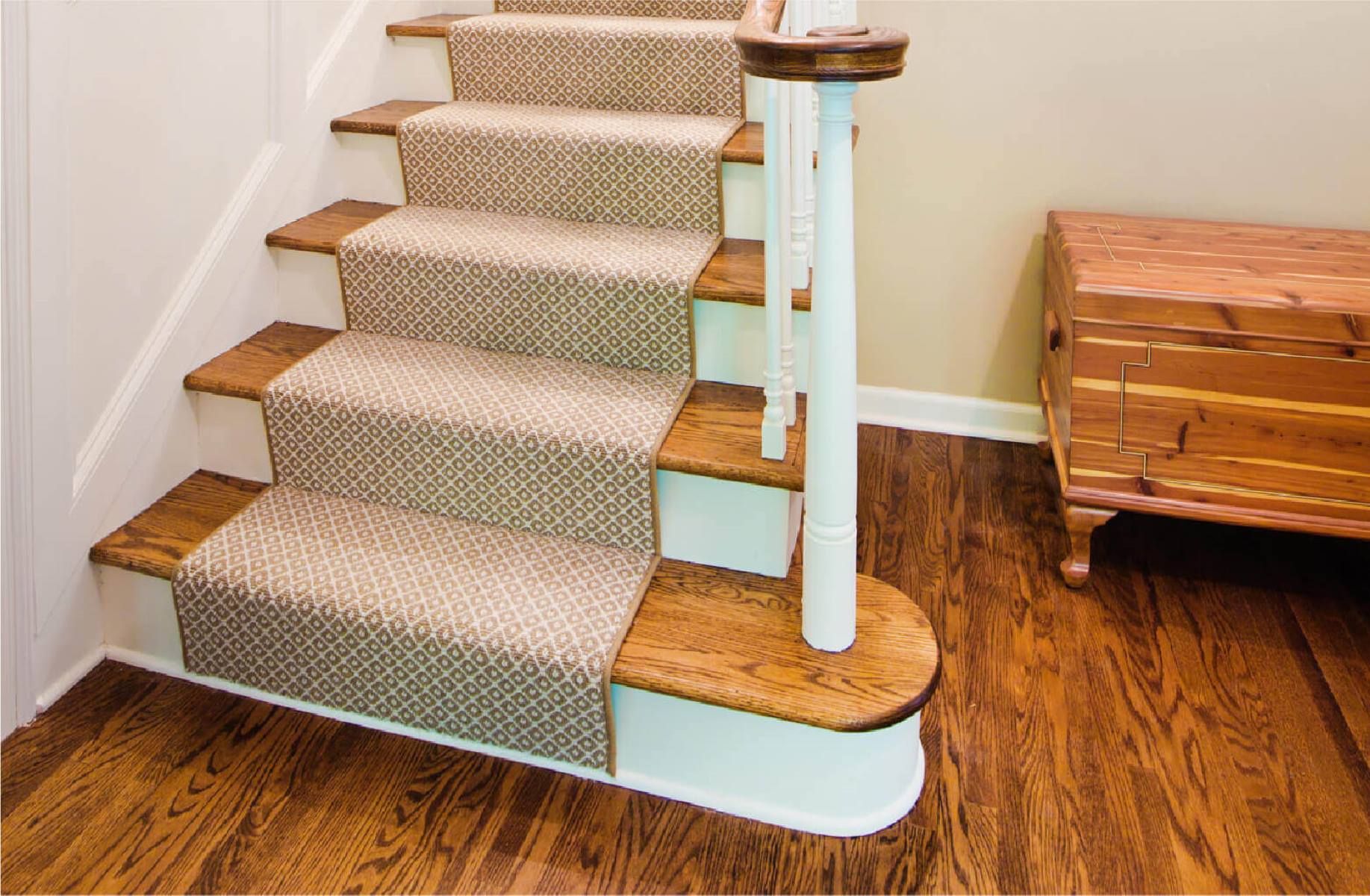
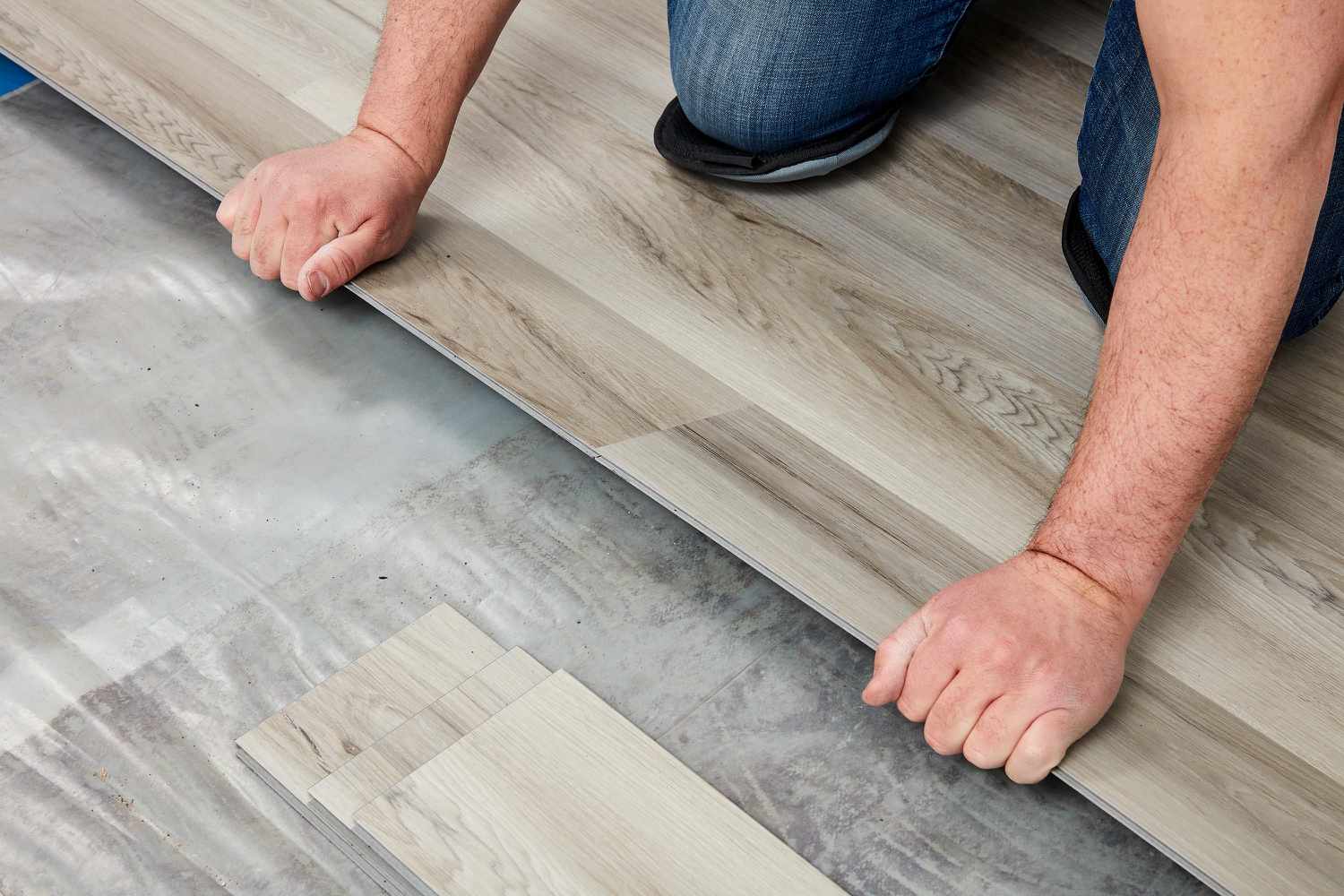

0 thoughts on “Vinyl Kitchen Flooring Ideas: 17 Practical But Luxury Floors”